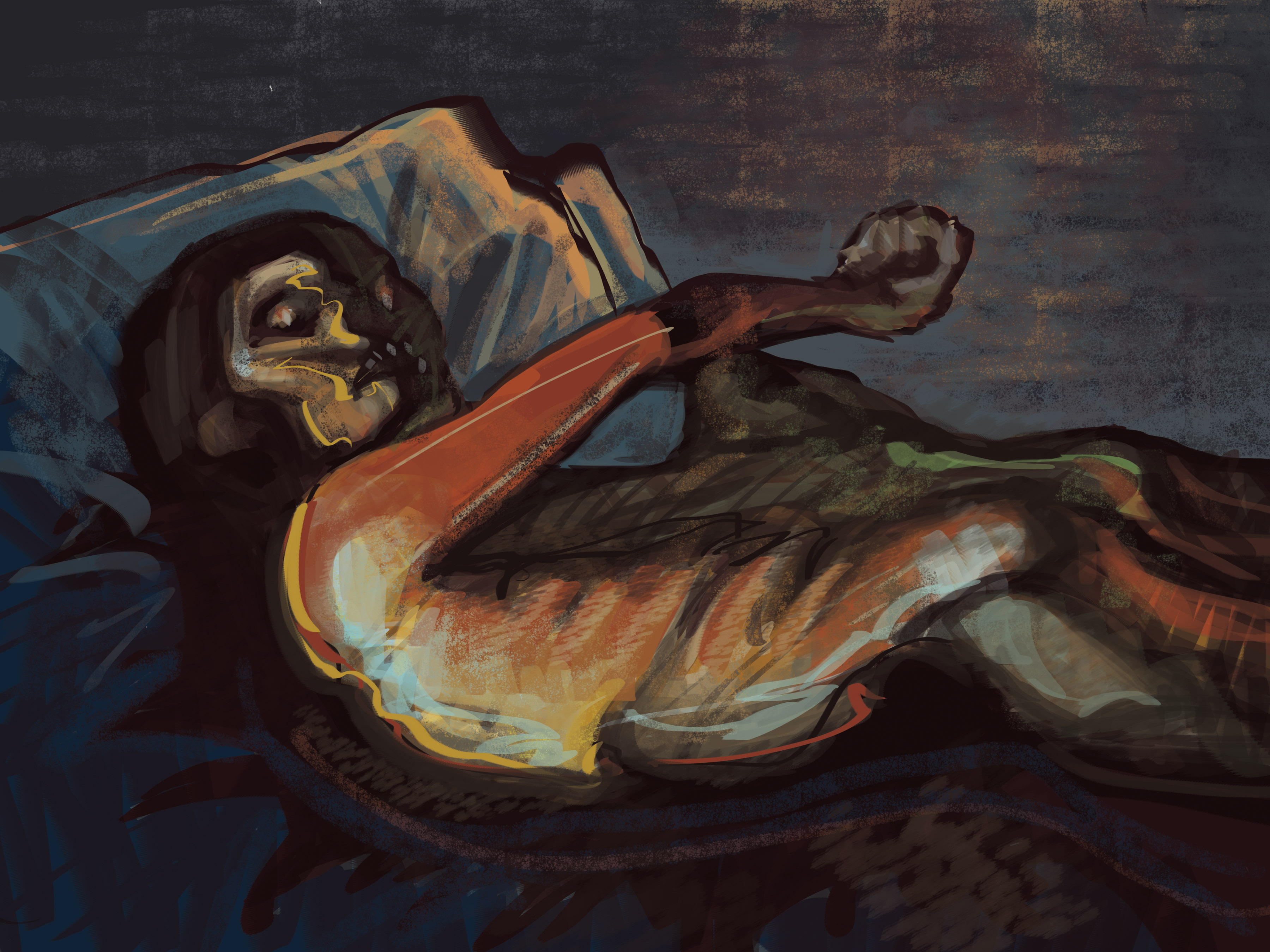On Sept. 19, 1991, Erika and Helmut Simon, vacationers from Nuremberg, Germany, discovered a man’s body protruding from the ice in the mountains of the Ötztal valley. They were on their way down from the Finail peak when they strayed from the designated hiking path to take a shortcut. As they passed a gully filled with thawing ice, they spotted what turned out to be a human corpse. They assumed it was the body of an unlucky mountaineer who had died in a recent accident. What they did not expect was that they had stumbled across a distant ancestor. Due to the location of his discovery, he was dubbed “Ötzi the Ice Man.”
At 5,300 years old, the Ice Man sheds light on Chalcolithic life, early human culture, and the history of disease. Thanks to modern DNA sequencing techniques, the genome of the Ice Man, holding rare and valuable information, has been sequenced.
Unfortunately for our friend, he has been diagnosed with a multitude of medical conditions. One very significant ailment the Ice Man was diagnosed with was arteriosclerosis: the hardening of artery walls. It may not seem like much, but this finding changes our perspectives on heart disease. The Ice Man was found to have a genetic predisposition to this condition. However, living the life of a hunter-gatherer, Ötzi did not have any of the risk factors for arteriosclerosis: being overweight, not getting enough exercise, smoking, and drinking.
“This new data suggests that we might be less able to prevent arteriosclerosis than we believed,” said Gregory Thomas, a cardiologist and mummy expert at the University of California, Irvine.
Another very significant medical find is that the Ice Man is the first known carrier of Lyme disease, which is caused by the bacterium Borrelia burgdorferi. A 60 per cent complete Lyme disease bacterium genome was isolated from the Ice Man, suggesting that the disease has been present for thousands of years.
Other medical problems found in the Ice Man include worn joints, gallstones, a growth on his little toe (thought to be caused by frostbite), eggs of parasitic worms in his gut, gum disease and tooth decay, and very high levels of arsenic in his body.
He also had several abnormalities, including the lack of both wisdom teeth, a gap between his front teeth (known as a diastema), the lack of the 12th pair of ribs, and possible infertility.
Aside from knowing the slew of medical conditions that plagued our Ice Man (the poor guy must have had a rough life), scientists were also able to gather information contributing to humanity’s cultural history.
The Ice Man had helped researchers learn more about the cultural history of the Chalcolithic era. He was fondly buried with his possessions, including: a bow, arrows, a copper axe, a cloak made of woven grass, a coat and leggings from goat skin, and a bearskin cap with a leather chinstrap.
According to an examination of his stomach contents, the Ice Man had eaten a final meal of venison and ibex. Along with this meat, 30 different species of pollen were also found in his stomach. This was a significant discovery, as the pollen analysis allowed for the researchers to pinpoint his death as occurring in the seasons of spring or early summer, as well as making it possible to trace out his movements through the mountains.
The Ice Man discovery also contributed to bettering our understanding of the history of tattoos. Ötzi had over 50 tattoos in total. The tattoos were made by rubbing charcoal into cuts on the skin. Some researchers believe that, rather than for decorative purposes, these ancient tattoos served as markings for points of acupuncture, since the tattoos were mainly located in areas prone to injury or pain, including the joints and the back.
Archaeological researchers have discovered evidence of foul play in Ötzi’s death. A flint arrowhead was found lodged in his left shoulder, having severed a major blood vessel. Wounds on the hands indicated that he had been involved in hand-to-hand combat shortly before dying, and a skull fracture indicates a fall or blow to the head. It is estimated that the Ice Man would have been around 45 years of age at the time of his death.
Though Ötzi’s life came to a bitter end, reports indicate that his lineage continues to live on in modern Austria.
Tests were previously conducted with mitochondrial DNA, which can only be passed on through the maternal line. Unfortunately, the maternal line of the Ice Man is believed to be extinct. Researchers then turned to DNA from the Y chromosome, which can only be paternally inherited.
From 3,700 blood donors in Western Austria, 19 males were found to share the same rare genetic trait with the Ice Man. These 19 individuals, who have not been informed of their ancestry, are unlikely to be the only descendants of the Ice Man. To find more modern-day genetic matches with the Ice Man, researchers are looking into testing individuals from regions of South Tyrol, Italy and Engadine, Switzerland that are near the excavation site.


